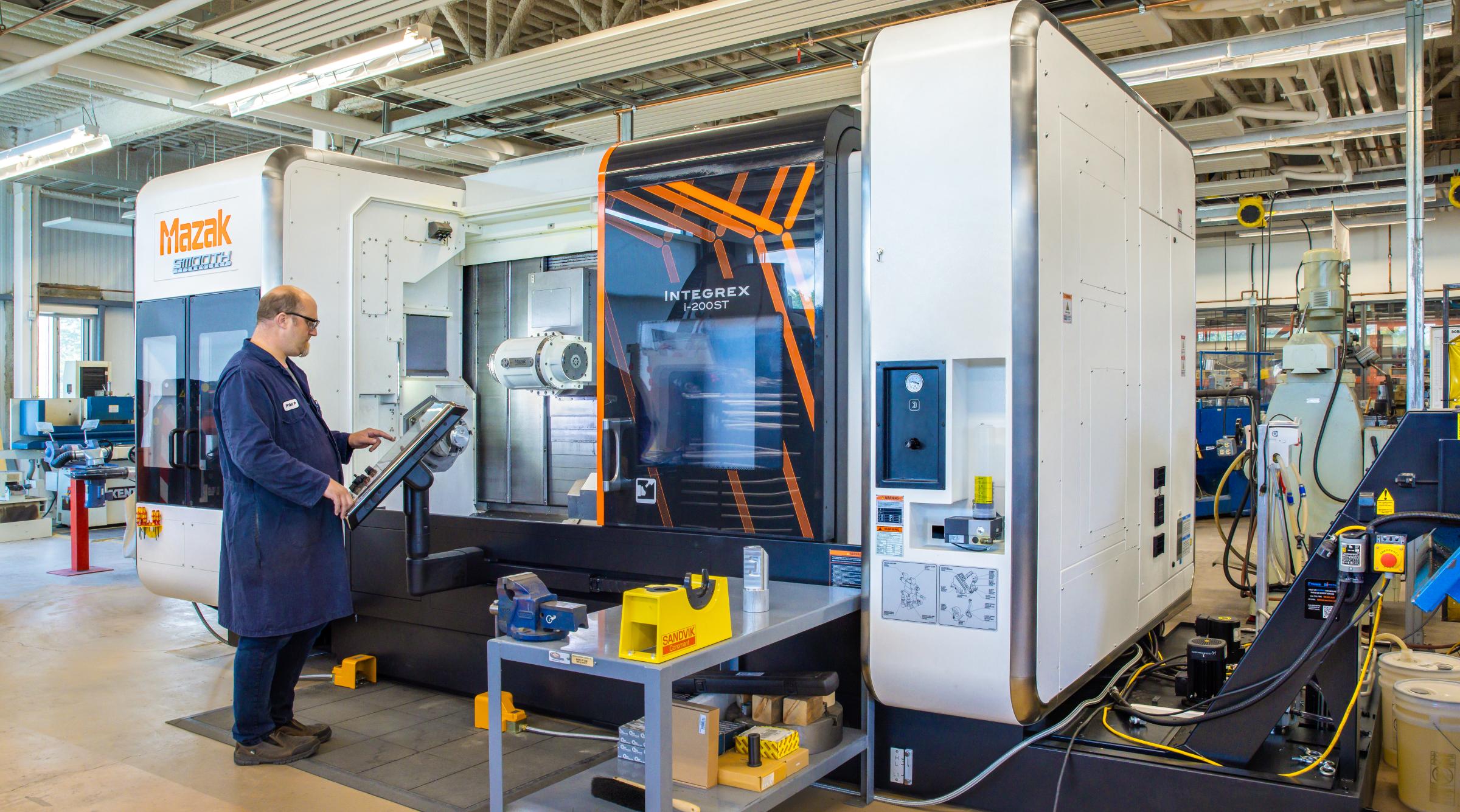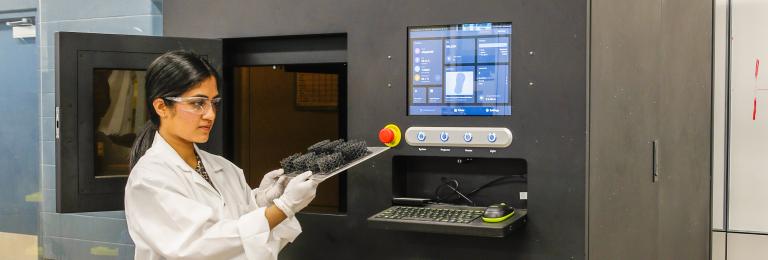RDP Collaborates with Other Polytechnics to Transform Asphalt Waste into Paving Stones

Red Deer Polytechnic’s (RDP) Centre for Innovation in Manufacturing-Technology Access Centre (CIM-TAC) is embarking on a new applied research initiative aimed at transforming construction waste into high-value paving stones.
This multi-year project for industry partner Sustainable Paving Stones (SPS) is funded in part with a $450,000 grant from Emissions Reduction Alberta (ERA). RDP will undertake the project in a collaborative effort with the Northern Alberta Institute of Technology (NAIT) and the Southern Alberta Institute of Technology (SAIT).
This innovative project addresses a growing environmental challenge: the escalating volume of asphalt shingle waste. With landfills nearing capacity and an increase in severe hailstorms contributing to roof damage, finding sustainable solutions for this waste stream has become critical. Currently, cost-effective commercial methods to convert recycled asphalt shingles and pavement (RASP) into valuable products are lacking. SPS's innovative technology aims to fill this gap by producing paving stones from RASP, offering a lower-carbon alternative to traditional concrete pavers.
This unique polytechnic consortium brings together diverse applied research expertise to support SPS in commercializing their technology. The primary objective is to design and build a commercial production unit capable of producing an impressive 9,000 pavers per hour. A key feature of this unit will be the integration of a biomass furnace, utilizing wood waste to provide heat, further reducing the overall greenhouse gas (GHG) emissions of the production process.
"We are excited to showcase what Alberta’s Polytechnics can achieve when we collaborate on industrial applied research solutions," says Dr. Tonya Wolfe, RDP's Associate Vice President of Applied Research. "Leveraging our extensive knowledge and resources in high-production equipment development, RDP’s CIM-TAC team will work closely with SPS to map out the process flow for each stage of the paver production cycle. RDP’s manufacturing expertise will be instrumental in designing a process to meet the ambitious production targets."
Specifically, RDP’s CIM-TAC engineers will be responsible for completing a process design following design for manufacturing principles, incorporating digital simulations to increase efficiency and productivity. This work will involve creating detailed equipment designs, performing structural calculations, and generating engineering drawings for the components required to fabricate the commercial unit. The designs will be reliant on research conducted at SAIT and NAIT. Following design and analysis, RDP’s CIM-TAC and SPS will combine their manufacturing and assembly skills to execute the design objectives. With components fabricated by RDP and industry partners where necessary, SPS will be well-positioned for comprehensive testing of the commercial unit by the project's conclusion in 2027.
RDP and SPS will also collaborate on developing robust testing guidelines and ensuring stringent safety measures are in place during verification against key performance metrics. To enhance the efficiency of SPS’s commercial process, CIM-TAC staff will conduct dedicated literature and laboratory studies on anti-stick surface technologies.
Beyond RDP's contributions, the partnership between RDP, NAIT and SAIT will perform iterative simulation and modeling to optimize heating profiles and investigate anti-stick surface technologies. Large-scale performance testing will assess the asphalt-based pavers' durability, both in laboratory settings and through potential field deployments in walkways. A comprehensive lifecycle assessment of SPS's commercial system will also be conducted to compare its lifetime GHG emissions against market-dominant concrete equivalents.
“The expertise, equipment and advanced technology provided by RDP, NAIT and SAIT are instrumental in refining our product’s design and accelerating its path to commercialization,” says David Babich, VP Operations, Sustainable Paving Stones. “This collaboration not only advances sustainability efforts across Alberta and beyond, but also empowers students to integrate academic learning with hands-on training and applied research—driving innovative solutions to industrial and societal challenges like repurposing materials and reducing waste.”
This unique applied research collaboration represents a significant step forward in establishing a novel waste-to-value solution. By transforming recycled asphalt shingles and pavement into advanced paving stones, the project not only addresses an environmental challenge but also creates new and lucrative market opportunities, showcasing the power of polytechnic applied research in driving sustainable industrial innovation.
Read more about research and innovation at RDP.
Related News


